Senegal
Senegal is an officially Francophone country in Western Africa. With the Atlantic Ocean to the west, Senegal has Guinea-Bissau to the south, Guinea to the southeast, Mali to the east, and Mauritania to the north. The Gambia is almost an enclave of Senegal in the middle of the western coast.
Regions

| Cap Vert-Thies (Dakar, Thies, Mboro, Popenguine, Joal-Fadiouth) |
| Central Senegal (Kaolack, Diourbel, Fatick) |
| Northern Senegal (Saint-Louis, Matam, Louga) |
| Casamance (Ziguinchor, Kolda) |
| Tambacounda Region (Tambacounda, Kedougou) |
Cities
- 🌍 Dakar : Capital city
- 🌍 Saint-Louis : Former capital of Senegal and French West Africa
- 🌍 Thiès :
- 🌍 Kaolack :
- 🌍 Ziguinchor :
- 🌍 Tambacounda :
- 🌍 Touba : Center of Mouride religious brotherhood
- 🌍 Kafountine :
- 🌍 Kedougou :
Other destinations
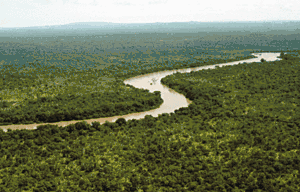
- Ports and harbors
- Matam, Podor, Richard Toll, Dakar, Palmarin
- Places of religion and contemplation
- Keur Moussa, Touba, Tivaouane
- Interesting Islands
- Fadiout + Joal, Ile de Gorée, Karabane
- Nature reserves
- Niokolo-Koba, Delta du Saloum, Parc National des oiseaux du Djoudj, Reserve de Palmarin
- Stone circles
- Nioro du Rip, Keur Ali Lobé, Sali, Kau-Ur to Wassau, Ker Batch
Understand
Climate
Senegal has a tropical climate that is both hot and humid for much of the year. The rainy season, from May to November, has strong southeast winds while the dry season from December to April is dominated by the hot, but dry, harmattan wind. Lowlands are seasonally flooded and there are periodic droughts.
Terrain
Generally low, rolling, plains rising to foothills in the southeast with the highest point only 581m near Nepen Diakha.
History
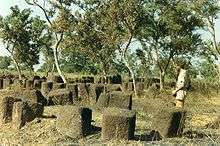
Prehistory and Ancient Kingdoms
The earliest known human settlement in Senegal existed over 350,000 years ago. The Stone Circles of Senegambia (now World Heritage Sites) may date back as far as the 3rd century BC. Not a lot is known about the earliest civilizations, but there were many paleolithic and neolithic civilizations around the Senegal River.
The Tekrur Kingdom (Tekrour), formed around the Senegal River in Futa Toro (Fouta Toro), is one of the earliest recorded Sub-Saharan kingdoms. Although the exact formation date is unknown, historians believe it began in the early 9th century, around the same time as the Ghana Empire formed in the east. Parts of eastern Senegal were ruled by the Ghana Empire as it expanded but Tekrur was more concentrated in Senegal (although the southern regions were inhabited by ancestors of the Wolof). It was during Tekrur rule that Islam came to Senegal in the 11th century from the Almoravids in the north. The Tekrur rulers first converted to Islam and most of the kingdom soon followed. After the Almoravids attacked the Ghanaian Empire, it slowly lost power and influence, giving rise to the Mali Empire in 1235.
The Wolof Empire (Djolof) was formed in the 13th century from many smaller states to the south of Tekrur as a tributary state of the Mali Empire. Unlike their northern neighbors, they were not converted to Islam; they were animists. The Tekrur Kingdom was weak by this time, so the rising Wolof and Mali Empires exercised heavy influence over them (the Mali Empire also considered Tekrur to be a tributary state). The Wolof Empire obtained full independence from Mali in 1360 with its capital at Linguère and overtook territories to the south around the Gambia and established many groups as vassals, such as the Sine Kingdom in 1400. The Wolof Empire became quite powerful and at the height of its rule saw the arrival of the Portuguese.
Portuguese arrival and the fall of the Wolof Empire
The Portuguese were the first Europeans to arrive in Senegal at Goree Island in 1444. They were searching for a new spice route to India but soon established ports in Goree and on the Cap-Vert Peninsula (present-day Dakar). The Wolof and Portuguese established trade relations, providing wealth to the empire. Europeans paid good money for war captives (which they sent off as slaves), and the natives were able to bring the slaves to them so that they didn't have to go inland. Senegal was one of the most profitable ports early on in the slave trading business and the strong Wolof were able to sell many captives from weaker regions. Their tributary, the Sine Kingdom, was also quite actively involved in selling captives to the Portuguese. Members of the Waalo Kingdom (a Wolof vassal state) were commonly the victims of captive raids. Sometimes the Europeans incited wars in order to ensure more captives while in other cases, the money they paid was enough incentive for natives to start conflicts just to produce slaves.
While profits were great in the beginning, the Atlantic slave trade soon crippled the empire as the Cayor Kingdom separated from the Wolof in 1549 and the Sine Kingdom became independent in 1550, cutting the Wolof off from the coast and from trade and business with the Portuguese. Along with internal problems, the Wolof were also plagued by outside problems. As a former tributary state of the Mali Empire, the Wolof maintained strong ties with Mali through trade with the empire, but as the Songhai grew stronger, they seized much of Mali's territory, further isolating the Wolof. Furthermore, the Denianke Kingdom (Denanke) had taken over territories to the north, including Takrur, and had attacked the Wolof's northern territories, which they struggled to maintain. By 1600, the Wolof Empire had completely disbanded, although one of the territories remained a Wolof state.
French conquest

The location and success of trade in Senegal made it a hot commodity among Europeans. The Portuguese, British, French, and Dutch all wanted the territory, particularly Goree Island. In 1588 the Dutch were able to successfully overtake the Portuguese and expanded trade. France established its first post in Saint-Louis. The Dutch and French were both keen to take control of the other's territory and fears of the growing powers of the Dutch Republic came to a head in the Franco-Dutch War. The war actually took place in Europe, but while the Dutch defended their homeland, the French attacked Goree Island and ousted the Dutch from Senegal, claiming it for France in 1677.
When the British took the territory during the Napoleonic War, they abolished slavery in 1807. Upon its return to France, the French agreed not to reinstate slavery, so slave trade in Senegal fell sharply during the 19th century but its rich resources were still in demand, and the French soon went inland to claim the territory.
During the time Europe was fighting over the coastal settlements, the Senegalese still had control of the land. The Waalo Kingdom existed around the Saint-Louis trading post, so they had a treaty with the French in which the French would pay them for goods and they would provide protection for the traders. When French ambitions turned to colonisation, they started by conquering their Waalo allies in 1855. Around the same time, the Toucouleur Empire had conquered the Futa Toro, which formed out of an Islamic revolution among citizens in the Denianke Kingdom in 1776 who were tired of being persecuted. The Toucouleur unsuccessfully tried to drive out the French in 1857, and the Trarza from Mauritania who supported the Senegalese kingdoms were also threatening French advancement.
The French built a series of forts along the coast and river. The Trarza were told they would not be attacked as long as they stayed north of the Senegal River and they did, thereby allowing France to establish greater control over northern Senegal. The construction of the Dakar-Niger Railway made it much easier to maintain control of the region; Senegal was in French control by 1895 and officially became part of French West Africa in 1904.
French Senegal to independence
The French created the Grand Council of French West Africa to oversee the territories and only French citizens and citizens of the Four Communes in Senegal were able to become members. The colonized people were only considered to be French subjects, so they were prevented from gaining power. However, in 1914 Blaise Diagne was able to prove he was born in one of the communes (Saint-Louis) and became the first black man elected to oversee the colonies. He then passed a law to allow citizens of Dakar, Saint-Louis, Rufisque, and Goree to vote in French elections and he sent many West Africans to aid France in WWI.
Senegal and French Sudan (modern Mali) joined to form the Mali Federation in 1959. The following year, France agreed to give them independence and on June 20, 1960, it officially gained independence from France. Senegal soon defected from the Mali Federation and became an independent state in August 1960. Senegal briefly joined the Gambia to form the nation of Senegambia in 1982 but they separated before the year ended. Issues with separatists in the southern Casamance region of Senegal have occurred since the 1980s, but a treaty was signed in 2004 that has been upheld to this day.
Senegal is often praised for its incorporation of all its ethnic and religious groups into a peaceful society.
People
The Wolof are the largest ethnic group in Senegal forming 43% of the population. The Fula and Toucouler are the second biggest ethnic group forming 24% of the population. The Bassari and Bedick make up 9% of the population.
Senegal is officially secular but is a very largely Muslim country (92% of the population). The 7% of the population who are Christians included Léopold Senghor, Senegal's very influential and long-ruling first president. Quite a few other religions are represented among the remaining 1% of the population, including traditional African religions.
Talk
- See also: Wolof phrasebook, French phrasebook
Wolof is the native language of some Senegalese people, but you will find that almost everyone speaks it. Knowing the basic Wolof greetings and phrases will go a long way in getting you better service and prices.
French is the official language and learnt by all Senegalese in school, so it is a very useful language for travellers to know. While some Senegalese merchants speak English, most business is conducted in French or Wolof. Other languages used in Senegal include Sereer, Soninke, Pulaar, Jola, and Mandinka.
The basic Muslim greeting is often used: Salaam Aleikum - Peace to you. The response is Waleikum Salaam - And unto you peace.
Get in
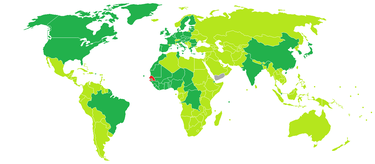
Entry requirements
Citizens of the following countries can enter Senegal without a visa: All EU citizens, Benin, Brazil, Burkina Faso, Canada, Cape Verde, Central African Republic, China, Republic of the Congo, Côte d'Ivoire, Djibouti, Gambia, Ghana, Guinea, Guinea-Bissau, India, Japan, Kenya, Liberia, Malaysia, Mali, Mauritania, Mauritius, Morocco, Niger, Nigeria, Sierra Leone, Singapore, South Korea, Togo, Tunisia, United States. Citizens of other countries must obtain an advance visa from their local Senegalese mission.
By plane
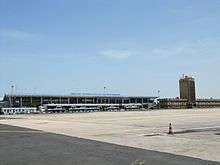
Dakar boasts a brand new airport, Blaise Diagne International Airport, opened in late 2017. The old Léopold Sédar Senghor International Airport that became too small for the increasing number of passengers still handles some international flights to nearby countries.
Delta Air Lines flies to Dakar on most of their US-Africa services, service from Atlanta and JFK airport takes roughly 8 hours. South African Airways flies direct from New York and Washington-Dulles in just about 7 hours (8.5 on the return trip). Other airlines route through Europe such as Brussels Airlines (Brussels), Air Senegal International (Paris-Orly), Air France (Paris-CDG), Alitalia (Milan), Royal Air Maroc (Casablanca), Iberia (Madrid, Gran Canaria), TAP (Lisbon) and others (5.5 to 6 hours). There are flights from various parts of Africa operated by Kenya Airways (Nairobi), Air Ivoire (Abidjan) and others.
By car
It is possible but a little bit difficult to get into Senegal by car. Senegal prohibits the import of cars that are more than eight years old, but if you are only staying for a short while, and agree to take your car out of the country, you should (eventually) be allowed through, but this cannot be guaranteed.
According to the customs of Senegal is it since 2008 again allowed to import cars also older than five years.
By train
A railway between Dakar and Bamako, Mali has fallen into disrepair and no longer runs as of 2012. The line was fixed (although much of it remained original track from around 1918) in the 2000s and run with used carriages/locomotives from India, but operation became sporadic by the end of the decade and the operator went bankrupt. The trains only run within Dakar to the suburbs for both passengers and containers.
Get around

Taxi, taxi-brousse, taxi-clando, car-charette, and transport commun (cars rapides) Buslines in Dakar and around Dakar are maintained by SOTRAC (Société des Transports en commun de Cap Vert), now managed by a private company and called Dakar Demm Dikk. Car hire is available in Dakar (city and airport) and sometimes in MBour and Saly Portudal.
The main method of travel around the country is by sept places (from the French for "seven seats," literally questionable station wagons in which they will pack seven people so that you are basically sitting on the next person's lap throughout the journey). You can also come with a group and rent out an entire sept place, but this will be expensive. If you are obviously a tourist, they will try to rip you off, so make sure to set a price before you agree to a driver. If you want to travel more comfortably, buy 2 seats. There are set prices to often-travelled locations. The price per seat from Dakar to Ziguinchor, for example, is CFA9,500.
Keep in mind that if you wish to drive your own car, there are few street signs (mostly speed limits) and almost all of them are disregarded. Many streets are considered one way, but are never marked as such, and there are almost no stop signs. Heavy traffic areas such as Dakar are best left to experienced drivers and the bold. To get around, one must be willing to dart into traffic, or else, stay stuck at an intersection for a while.
Recently, a new tollway was opened near Dakar that allows you to drive around Rufisque. Especially during peak hours, this is worth the CFA400 (for a regular car), as traffic jams in Rufisque can easily take up to 2 hours.
See
With arid desert and lush rainforests, Senegal boasts a stunning array of sights, sounds and flavours.
- Lac Rose owes its name to its pink colouring for swimming and is also the terminus of the Dakar rally.
- Parc National du Niokolo-Noba is one of Senegal's major national parks and an international biosphere reserve.
Do

- Fathala Reserve (at Karang just north of the border to Gambia), ☎ +221 776379455, e-mail: sarra@orange.sn. open all year. Go on a 3-hour mini-safari in your own car or hire an off-road car at the reserve. You will see giraffes, rhinos, elands, antelopes, many birds CFA10,000.
Buy
Money
|
Exchange rates for CFA francs As of January 2019:
Exchange rates fluctuate. Current rates for these and other currencies are available from XE.com |
The currency of the country is the West African CFA franc, denoted CFA (ISO currency code: XOF). It's also used by seven other West African countries. It is interchangeable at par with the Central African CFA franc (XAF), which is used by six countries. Both currencies are fixed at a rate of 1 euro = 655.957 CFA francs.
ATMs
Ecobank take Master Card and Visa card at their ATMs in Senegal. Outside major cities, ATMs are non-existent, and credit card transactions unheard of.
Maps
Tourist maps are available at the tourist offices.
International Driving Permit (IDP)
If you want to explore the country by (rented) car, you need one.
Vaccines
A yellow fever vaccine is required, together with the vaccination certificate, to enter Senegal. It is, however, not checked on a regular basis.
Mosquito repellents
Buy at least a mosquito net (preferably permethrin-impregnated) and a good repellent (preferably DEET-based). Permethrin can be washed into clothing and will remain in the garment for a month before the effectiveness of the product wears off and should be reapplied.
Eat
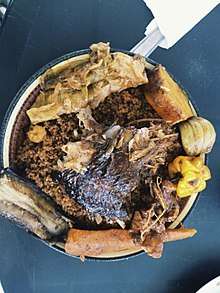
Be careful with food prepared by the road, as it could be cooked in unsanitary conditions. Western-style meals are available and can be found at restaurants in various parts of Dakar, Thies, Saint Louis and other towns and near the big hotels in the Petite Côte and in some other touristic regions of the country, too.
If you really want to try genuine Senegalese food, you can buy it at restaurants serving Senegalese dishes; or alternatively, you can make it yourself with the food gathered fresh from the markets or supermarkets.
The official dish of Senegal is ceebu jen (or thebou diene) -- rice and fish. It comes in two varieties (red and white -- named for the different sauces). The Senegalese love ceebu jen and will often ask if you've ever tried it, and it is definitely part of the experience. Even better if you get the chance to eat with your hands around the bowl with a Senegalese family! Keep your eyes out for the delicious, but elusive ceebu jen "diagga", which is served with extra sauce and fish balls. Other common dishes are maafe, which is a rich, oily peanut-based sauce with meat that is served over white rice. Yassa is a delicious onion sauce that is often served over rice and chicken, yassa poulet or with deep fried fish yassa jen.
Drink
If you intend to explore the arid area of Senegal (Saint-Louis & Ferlo), you need to drink several liters of water a day. Even in Dakar, dehydration is possible during warmer months if you do not drink enough water each day.
Work
There are many opportunities for people to make a difference in Senegal. Projects Abroad is a volunteer organisation based in St Louis with opportunities to help out teaching English, caring for underprivileged children, teaching sport or being a human rights advocate amongst other things. Volunteers get to stay with local host families, which is a huge honour.
Learn
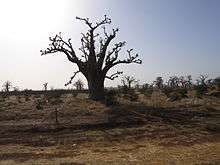
It might also be a good idea to learn some basic Wolof, since not everybody can speak French. In addition there are many other languages such as Toucouleur, Serere, peuls, etc. However, almost everyone can speak Wolof. Therefore knowing Wolof would be a big help.
Stay safe
Although highly exaggerated, there is still fighting going on in the Casamance region of Senegal.
The "struggle" goes on between the government and the MFDC or Mouvement des forces démocratiques de la Casamance. It would be wise to avoid travel to this area. If this is not possible, at least first check with the embassy for the latest situation. To find out how much the situation has improved look at this IRIN News report:
In Dakar, take care when walking the streets: petty theft and scams are abundant. You will be approached by aggressive street vendors who will follow you for several blocks. If refused, often accusations of 'racism" will be leveled at white non-local non-buyers. Also, pickpockets use the following two-person tactic: one (the distraction) will grab one of your legs while the other (the thief) goes into your pocket. If someone grabs your clothing, beware the person on the other side more. Wear pants/shorts with secure (buttons or snaps) pockets and leave your shirt untucked to cover your pockets.
Be cautious of people claiming to have met you before or offering to guide you. Oftentimes, you will be led to a remote location and robbed. Women need to be particularly alert as they are frequently targeted at beaches or markets.
Finally, there have been instances of street stall vendors grabbing cash out of non-local shoppers' hands and quickly stuffing the money into their own pocket. After the money is in their pocket, they claim it is theirs and the victim is not in a position to prove otherwise or protest effectively. Be careful with your cash: do not hold it in your hand while bargaining.
Be sure to carry some sort of identification on you. Police pull over vehicles and check for proper papers occasionally. If caught without your passport (a copy of a passport is recommended), the police may try to solicit a bribe from you; they may even go as far as to take you to the station. While most of the time, they are bluffing and one should not give into such corruption, some officials may be wicked enough to do so. Use this advice with caution. The simplest way to prevent this is just to carry identification.
Homosexuality is a big taboo in Senegal and punishable with 1 to 5 years imprisonment. LGBT travellers should be extremely cautious. Do not tell anyone about your sexual orientation!
Stay healthy
Get necessary vaccines before arrival. Officially, certification of yellow fever vaccine is required upon arrival if coming from a country in a yellow fever zone, but it is not commonly checked.
Take anti-malarials.
Avoid tap water and all dishes prepared with it. Bottled water, such as Kirene which is most common and bottled in Senegal, is widely available and inexpensive.
To prevent serious effects of dehydration, it is wise to carry around packets of rehydration salts to mix with water, should you become dehydrated. These are widely available at pharmacies and are inexpensive. Alternatively, a proper mix of table salt and sugar can replace these.
Respect
|
Ramadan Ramadan is the 9th and holiest month in the Islamic calendar and lasts 29–30 days. Muslims fast every day for its duration and most restaurants will be closed until the fast breaks at dusk. Nothing (including water and cigarettes) is supposed to pass through the lips from dawn to sunset. Non-Muslims are exempt from this, but should still refrain from eating or drinking in public as this is considered very impolite. Working hours are decreased as well in the corporate world. Exact dates of Ramadan depend on local astronomical observations and may vary somewhat from country to country. Ramadan concludes with the festival of Eid al-Fitr, which may last several days, usually three in most countries.
If you're planning to travel to Senegal during Ramadan, consider reading Travelling during Ramadan. |
The primary religion in Senegal is Islam, and most Senegalese are extremely devout Muslims. It's important to be respectful of this because religion is very important in Senegalese life. However, don't be afraid to ask questions about Islam -- for the most part, Senegalese people love to talk about it!
Greet everyone when entering a room with "Salaam Aleikum." Always shake hands with everyone. Do not enter mosques and other religious places wearing shoes.
Foreign women can expect to get many marriage proposals from Senegalese men. Handle this with a sense of humour - and caution.
As far as dress goes, be aware that anything shorter than knee length is inappropriate. Tank tops are generally accepted in larger towns, but should be avoided as much as possible.
